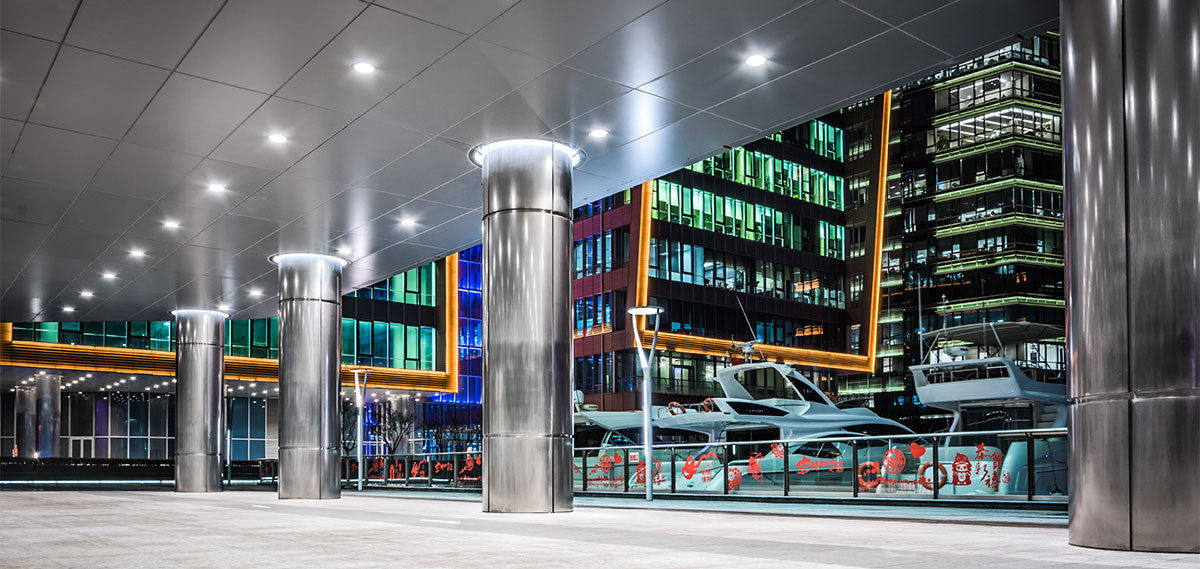
LEDs have been growing popular in recent years because of technological advancements. The improvements in LED brightness, energy efficiency and several other parameters have changed the future of lighting sources. Industries have started leveraging LED technology to reduce their energy bill and save money. Below, we have mentioned nine benefits of using LED in industries.
LED lighting- In Nutshell
LED is a type of semiconductor device that works on the principle of electroluminescence, according to which, when an electric current passes through a diode, it emits light. The LED working is opposite to photovoltaic cells, which convert light into electricity.
LED lights are used in traffic signals, computer displays and light fixtures. And depending upon the material used in the semiconductor, they come in a variety of hues and intensities. The recent advancements in LED technology are reducing its cost and increasing energy efficiency. All these factors make it a popular choice among facilities, businesses, and warehouses.
Benefits of LED bulbs in industries
Long lifespanCompared to incandescent bulbs, led warehouse light lifespan is far more. The average life span of an LED is 50,000 hours, whereas the incandescent bulb's life span is a thousand hours. However, the lifespan can increase depending on your usage. LED bulbs can have a life of 6-8 years, implying you need not replace them frequently. LED can save time and money on maintenance in facilities with high ceilings or hard-to-reach areas where bulb replacement is difficult.
Energy efficientLED lights use less electricity and are less costly to operate than traditional bulbs. So, if you want to install it in a facility which requires many light sources, they can help you save money on your energy bills.
Environment-friendlyCompanies are becoming more concerned with adopting eco-friendly practices, and LEDs can provide them with a way to help the environment. LED does not use mercury like traditional light, which uses mercury in its construction. Because of mercury, they require careful handling when they come near the end of their lifespan.
Adaptable to a cooler temperatureTraditional light sources such as incandescent bulbs and halogen lamps produce light when the electric current is passed through a filament. And during this process, they emit light as a by-product. For example, about 90% of the energy used by incandescent lamps is emitted in the form of heat. Due to this, they are considered less energy efficient than other light sources. In contrast, halogen lamps and fluorescent light produce less heat than incandescent bulbs. Modern lighting options such as LED produce less heat than other lighting sources, so they can perfectly thrive in facilities such as cold storage, parking spaces, etc.
Manage glareGlare can affect the productivity and safety of the workers in industries and their quality of work. LED can help manage glare as they are designed for it. Well-designed optics on warehouse LED light fixtures also help minimise brightness.
Enhanced Lighting CapabilityThe lighting capability of LEDs has been improved in the past few years, making them a perfect choice for household, commercial and industrial applications. It has high luminous efficiency, which means it can produce more light with less power. The second is the increased coloured temperature range, which determines the warmth and coolness of light sources such as warm (Yellow) and cool (blue). LED technology offers a wide range of colour temperatures, allowing users to customise the colour of the lighting that suits their needs.
Design flexibilityLEDs can be used in any application because they are very small in size. Don’t forget- it was first used as an indicator in the circuit. So, you can use LEDs to illuminate anything from a small shop to a big multiplex.
Withstand instant switchingLED does not take time to switch on and off. However, it takes around three to four seconds for a fluorescent lamp to light after flickering. Also, frequent switching reduces their lifespan, which is not the case with LED lights. So, an LED can be an ideal solution if you do not want to wait for the light to turn on after a power surge or blackout. Also, quick switching is crucial for safety in a facility where visibility is crucial.
DurabilityLight-emitting diodes are generally considered durable compared to other lighting sources. They don’t contain fragile components such as filaments that can damage easily. They can withstand shock, vibration, and extreme temperature and are less prone to damage, making them a good choice for industries.
At last, these are some advantages of using LED bulbs in industrial settings; We hope they will help you decide. For more information on LED lighting, keep reading our blogs.

